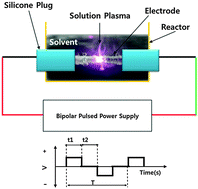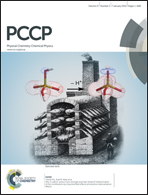Enhancement of ORR catalytic activity by multiple heteroatom-doped carbon materials†
Abstract
Heteroatom-doped carbon matrices have been attracting significant attention due to their superior electrochemical stability, light weight and low cost. Hence, in this study, various types of heteroatom, including single dopants of N, B and P and multiple dopants of B–N and P–N with a carbon matrix were synthesized by an innovative method named the solution plasma process. The heteroatom was doped into the carbon matrix during the discharge process by continuous dissociation and recombination of precursors. The chemical bonding structure, ORR activity and electrochemical performance were compared in detail for each single dopant and multiple dopants. According to the Raman spectra, the carbon structures were deformed by the doped heteroatoms in the carbon matrix. In comparison with N-doped structures (NCNS), the ORR potential of PN-doped structures (PNCNS) was positively shifted from −0.27 V to −0.24 V. It was observed that doping with N decreased the bonding between P and C in the matrix. The multiple doping induced additional active sites for ORR which further enhanced ORR activity and stability. Therefore, PNCNS is a promising metal-free catalyst for ORR at the cathode in a fuel cell.


 Please wait while we load your content...
Please wait while we load your content...